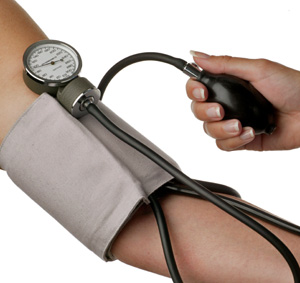With regards to the discussion concerning sleep apnea and its effect on blood pressure, it is important to note that you should be monitoring your blood pressure at home. Many people rely only on measurements obtained at doctors' offices or at the "automated blood pressure sites" found in most pharmacies and supermarkets. The problem with those options is that the results may not reflect your true blood pressure. Many people have "white-coat" hypertension when they go to a doctor's office, meaning that their blood pressure is high in the office, but normal at home or other places. Therefore, it is very important to monitor your own blood pressure at home to get a better idea of what it truly is.
 |
| Kidney Failure And Blood Pressure |
MONITORING YOUR BLOOD SUGARS AT HOME
As with blood pressure, if you have been diagnosed with diabetes it is important to check your blood sugars at home. It is important to measure them before you eat, as well as after certain meals - termed post-prandial (pran-d-e-al) glucose. Having high blood sugars increases the workload and stress on the kidneys. It is surprising how many people do not check them at home, but rely solely on measurements obtained at their doctor's office. You should discuss monitoring your blood sugars at home with your doctor, if you are not doing so already.
Taking Your Blood Pressure at Home
When - notice I didn't say if - you start taking your blood pressure at home, it is important to pay attention to the following principles:
- Position. You should be sitting at a table, feet flat on the floor, with your arm extended and resting comfortably on the table. Your arm should be at about heart level. Wear a short-sleeved shirt or have your sleeves rolled up if you are not. The blood pressure reading should never be taken on top of clothing. Additionally, the blood pressure you take at home should be a resting blood pressure; you should be sitting for about five minutes before taking the reading.
- Type of Cuff. There are several different types of cuffs. One is the "standardized" manual blood pressure cuff, which is placed on the upper part of your arm and is similar to how the doctor takes your blood pressure at the office. This requires practice if you are going to do it yourself, unless you're going to have someone take it for you. Another is the digital cuff, which is an electronic device that will give a digital-type of readout along with the heart rate on the monitor.
- Size of Cuff. The cuff should wrap tightly around the arm with a little bit left over. For adults, there is an adult-size cuff and a large-size cuff. The size is very important. If the cuff is too small, the reading could be falsely elevated; if the cuff is too large, it will falsely give a lower reading. You should review the type and size of the cuff you are using with your doctor.
Follow the directions for inflating the cuff if you are using a digital cuff. Record your blood pressure and bring your results as well as the cuff into the office. Your doctor may want to use your cuff and compare a blood pressure reading taken in his office to your at-home results to get a better idea of its accuracy. The take home point is to, no matter what, take your blood pressure at home! To find out more, you can check out Kidney Failure And Blood Pressure.
